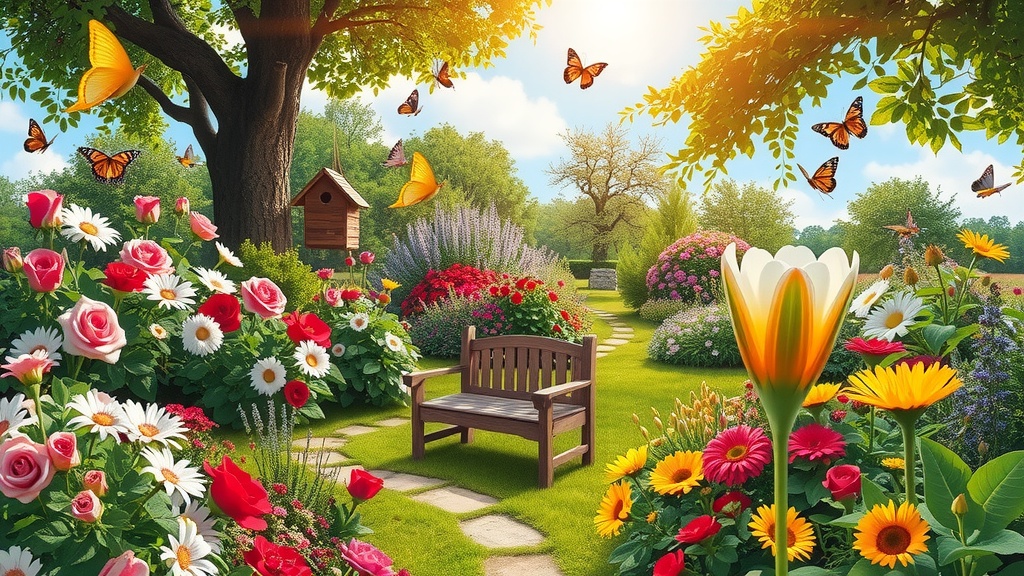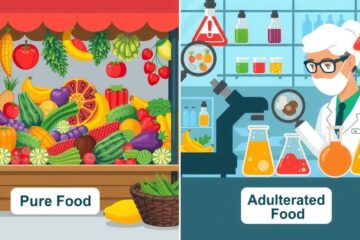Imagine stepping into a world bursting with colors, scents, and the gentle hum of nature. That’s the magic of a garden! For students from Class 6 to HSC, describing your own garden can be a delightful exercise. It’s more than just listing plants; it’s about sharing a personal connection with nature. Whether you need a short 150-word paragraph, a more detailed 250-word description, or a comprehensive 300-word essay, this guide will help you cultivate the perfect “My Garden” paragraph. We’ll explore how to bring your garden to life with words, making it a vivid experience for your readers. And yes, we’ll even touch upon the paragraph Bangla meaning to help you understand the nuances better. Let’s get started!
Unveiling the Beauty: Crafting Your “My Garden” Paragraph
A garden is more than just a patch of land; it’s a sanctuary, a hobby, and a source of joy. Describing it effectively requires painting a picture with words. Let’s explore how to do that for different word counts.
My Garden Paragraph for Class 6-8 (150 Words)
My garden is a small but beautiful place behind my house. It’s my favorite spot because of all the colorful flowers. Roses, marigolds, and sunflowers bloom in different seasons. My mother and I planted them together. We also have some vegetables like tomatoes and spinach. I water the plants every day. Butterflies and bees visit my garden, making it lively. The air is fresh, and the flowers smell sweet. Sometimes, I sit there with a book and enjoy the peace. My garden teaches me about nature and patience. It’s a little piece of paradise where I can relax and be happy.
My Garden Paragraph for Class 9-10 (250 Words)
Behind our house lies a vibrant garden, a sanctuary I cherish deeply. It’s not just a collection of plants; it’s a living canvas painted with nature’s finest hues. Roses, in shades of crimson and blush, climb along the fence, their velvety petals unfurling to greet the sun. Marigolds, with their sunny disposition, add a cheerful splash of yellow, while sunflowers stand tall, their faces turned towards the sky.
My mother and I cultivate this space together, a shared passion that strengthens our bond. We’ve planted a variety of vegetables – plump tomatoes, leafy spinach, and crisp cucumbers – providing us with fresh, organic produce. Every morning, I water the plants, feeling the cool earth beneath my fingers and the gentle spray refreshing the leaves.
Butterflies, with their delicate wings, flutter among the blossoms, and bees hum busily as they collect nectar. The air is filled with the sweet fragrance of flowers, a natural perfume that soothes the soul. I often find myself drawn to the garden, seeking solace and inspiration. It’s a place where I can escape the noise of the world and connect with the tranquility of nature. My garden is more than just a garden; it’s a source of peace, joy, and a constant reminder of the beauty that surrounds us. It teaches me patience, responsibility, and the simple pleasure of nurturing life.
My Garden Paragraph for Class 11-12 (300 Words)
Nestled behind our home is a garden that transcends the mere definition of cultivated land; it is a vibrant ecosystem, a personal haven, and a testament to the beauty of nature’s artistry. This garden is a kaleidoscope of colors, textures, and scents, a living tapestry woven with care and dedication. Roses, the undisputed queens of the garden, display their regal splendor in a multitude of shades, from the deep crimson of ‘Mr. Lincoln’ to the delicate blush of ‘Peace.’ Marigolds, with their vibrant orange and yellow hues, inject a dose of cheerfulness, while sunflowers, like miniature suns, stand tall and proud, their faces perpetually turned towards the life-giving rays.
Beyond the ornamental flora, our garden boasts a thriving vegetable patch, a testament to our commitment to sustainable living. Tomatoes, plump and juicy, hang heavy on their vines, promising the taste of summer. Spinach, with its deep green leaves, provides a healthy dose of vitamins and minerals. Cucumbers, crisp and refreshing, offer a welcome respite from the heat.
The garden is a haven for local wildlife. Butterflies, with their intricate patterns, dance among the flowers, their delicate wings carrying them from blossom to blossom. Bees, the tireless pollinators, hum busily as they collect nectar, ensuring the continuation of life. Birds chirp merrily from the branches of the trees, their songs adding to the symphony of nature.
I find solace and inspiration in this garden. It is a place where I can escape the pressures of academic life and reconnect with the earth. As I tend to the plants, I feel a sense of purpose and fulfillment. The garden teaches me patience, resilience, and the importance of nurturing life. It is a constant reminder of the beauty and fragility of our natural world. My garden is not just a garden; it is a reflection of my soul, a place where I can grow, learn, and find peace. It’s a sanctuary where the paragraph Bangla meaning of ‘প্রকৃতির শান্তি’ (prokritir shanti – peace of nature) truly comes alive.
Adding Depth and Detail: Enhancing Your Description
To make your paragraph truly stand out, consider adding these elements:
- Sensory Details: Engage the reader’s senses by describing the sights, sounds, smells, and textures of your garden.
- Personal Connection: Share your personal feelings about the garden and what it means to you.
- Specific Examples: Instead of just saying “flowers,” name specific types of flowers and describe their unique characteristics.
- Action Verbs: Use strong action verbs to bring your garden to life. Instead of “the flowers are,” try “the flowers dance in the breeze.”
Frequently Asked Questions (FAQs)
Let’s address some common questions about writing a “My Garden” paragraph:
What is the best way to start a “My Garden” paragraph?
Start with an engaging sentence that captures the essence of your garden. For example:
- “Stepping into my garden is like entering a different world.”
- “My garden is a small oasis of peace and tranquility.”
- “Behind my house lies a vibrant garden, bursting with life.”
How can I make my paragraph more interesting?
- Use vivid language and sensory details.
- Share personal anecdotes or stories about your garden.
- Focus on what makes your garden unique.
- Incorporate figurative language like similes and metaphors.
What should I include in a “My Garden” paragraph for Class 6?
Focus on simple descriptions and your personal experiences. Include:
- Types of plants in your garden
- Activities you do in the garden
- Your favorite things about the garden
- Who you share the garden with (family, friends)
How can I add a paragraph Bangla meaning perspective to my writing?
While writing in English, you can subtly incorporate the essence of Bengali culture and appreciation for nature. For example:
- Mentioning specific Bengali flowers or plants that are part of your garden (e.g., Beli, Hasnahena, Joba).
- Describing how the garden connects you to your roots and traditions.
- Reflecting on the philosophical significance of nature in Bengali literature and art.
What are some common mistakes to avoid?
- Being too general: Provide specific details instead of vague descriptions.
- Using clichés: Avoid overused phrases and try to be original.
- Focusing only on the plants: Remember to describe the overall atmosphere and your personal connection to the garden.
- Ignoring grammar and spelling: Proofread your paragraph carefully before submitting it.
How can I use “My Garden Paragraph for Class 6-12, SSC, HSC, 150, 250, 300 Words” effectively for SEO?
- Include the keyword naturally in your title and headings.
- Use variations of the keyword throughout the text.
- Focus on providing valuable and informative content that answers the reader’s questions.
- Optimize your paragraph for readability and user experience.
What are some good vocabulary words to use when describing a garden?
Consider using words like:
- Vibrant
- Lush
- Tranquil
- Fragrant
- Blooming
- Flourishing
- Serene
- Picturesque
- Radiant
- Bountiful
How can I show, not tell, in my garden description?
Instead of saying “The roses were beautiful,” describe their appearance: “The roses unfurled their velvety petals, revealing a heart of gold dusted with pollen.” Instead of saying “The garden was peaceful,” describe the sounds: “The gentle rustling of leaves and the chirping of birds created a symphony of tranquility.”
Can I include information about the challenges of gardening?
Yes, adding a touch of realism can make your description more relatable. You could mention:
- The hard work involved in weeding and watering
- Pests and diseases that affect your plants
- The challenges of dealing with unpredictable weather
How important is originality in a “My Garden” paragraph?
Originality is crucial. Avoid copying descriptions from other sources. Instead, focus on your own unique garden and your personal experiences. This will make your paragraph more authentic and engaging.
Secondary Keywords and Questions Explored
Let’s delve into some related topics and questions that can enrich your “My Garden” paragraph:
“Benefits of Having a Garden”
Having a garden offers numerous benefits, both physical and mental. It provides fresh air and exercise, reduces stress, and promotes relaxation. Gardening can also be a source of creativity and inspiration. From a practical standpoint, a vegetable garden can provide fresh, healthy produce, saving money and reducing your carbon footprint.
“Types of Gardens”
There are many different types of gardens, each with its own unique characteristics. Some common types include:
- Flower Garden: Primarily focused on ornamental flowers.
- Vegetable Garden: Dedicated to growing edible plants.
- Herb Garden: Featuring aromatic and medicinal herbs.
- Rock Garden: Incorporating rocks and alpine plants.
- Water Garden: Featuring aquatic plants and water features.
- Container Garden: Using pots and containers to grow plants.
- Rooftop Garden: Utilizing rooftop space for gardening.
“How to Start a Garden”
Starting a garden can seem daunting, but it’s actually quite simple. Here are a few basic steps:
- Choose a location: Select a spot that receives plenty of sunlight and has well-drained soil.
- Prepare the soil: Remove weeds and rocks, and amend the soil with compost or other organic matter.
- Select your plants: Choose plants that are appropriate for your climate and growing conditions.
- Plant your seeds or seedlings: Follow the instructions on the seed packet or plant label.
- Water regularly: Keep the soil moist but not soggy.
- Weed and fertilize: Remove weeds regularly and fertilize your plants as needed.
“Gardening as a Hobby”
Gardening is a rewarding and fulfilling hobby that can be enjoyed by people of all ages. It’s a great way to connect with nature, learn new skills, and create something beautiful. Gardening can also be a social activity, with opportunities to join gardening clubs and share your knowledge with others.
“The Importance of Plants”
Plants are essential for life on Earth. They provide us with oxygen, food, and shelter. Plants also play a vital role in regulating the climate and maintaining the health of our ecosystems. By growing a garden, you can contribute to the preservation of biodiversity and the creation of a more sustainable world.
“Gardening Tips for Beginners”
- Start small: Don’t try to do too much at once.
- Choose easy-to-grow plants.
- Learn about your local climate and growing conditions.
- Don’t be afraid to experiment.
- Ask for help from experienced gardeners.
- Be patient and persistent.
“Sustainable Gardening Practices”
- Composting: Recycling organic waste to create nutrient-rich soil.
- Water conservation: Using efficient irrigation methods and collecting rainwater.
- Organic pest control: Avoiding harmful pesticides and using natural methods to control pests.
- Crop rotation: Planting different crops in the same area each year to improve soil health.
- Mulching: Using organic materials to suppress weeds and retain moisture.
Table: Comparing Garden Types
| Garden Type | Key Features | Best For |
|---|---|---|
| Flower Garden | Ornamental flowers, vibrant colors, diverse shapes | Aesthetic appeal, attracting pollinators, creating a beautiful outdoor space |
| Vegetable Garden | Edible plants, fresh produce, organic food | Healthy eating, saving money, reducing carbon footprint |
| Herb Garden | Aromatic herbs, medicinal properties, culinary uses | Flavoring food, making herbal remedies, adding fragrance to the garden |
| Rock Garden | Rocks and alpine plants, drought-tolerant species | Dry climates, sloped areas, creating a unique and low-maintenance garden |
| Water Garden | Aquatic plants, water features, serene atmosphere | Creating a relaxing oasis, attracting wildlife, adding visual interest |
| Container Garden | Plants in pots and containers, flexibility, portability | Small spaces, balconies, patios, easy to move plants around |
| Rooftop Garden | Plants on rooftops, urban gardening, utilizing unused space | Urban environments, maximizing space, reducing urban heat island effect |
The Essence of “My Garden”: A Personal Reflection
Writing about your garden is an opportunity to reflect on your connection with nature and the simple joys of life. It’s a chance to share your passion and inspire others to appreciate the beauty and wonder of the natural world. Whether you’re writing a short paragraph or a longer essay, remember to focus on your personal experiences and what makes your garden special.
Beyond the Paragraph: Cultivating a Lifelong Love for Gardening
The “My Garden” paragraph is just the beginning. Gardening is a lifelong journey of learning, discovery, and connection. Embrace the challenges, celebrate the successes, and never stop exploring the wonders of the natural world.
So, go ahead, grab your pen (or keyboard) and start writing. Let your words blossom and paint a vivid picture of your garden, a place where beauty, peace, and life thrive. And remember, whether in English or understanding the paragraph Bangla meaning, the essence lies in sharing your unique connection to this special space.




